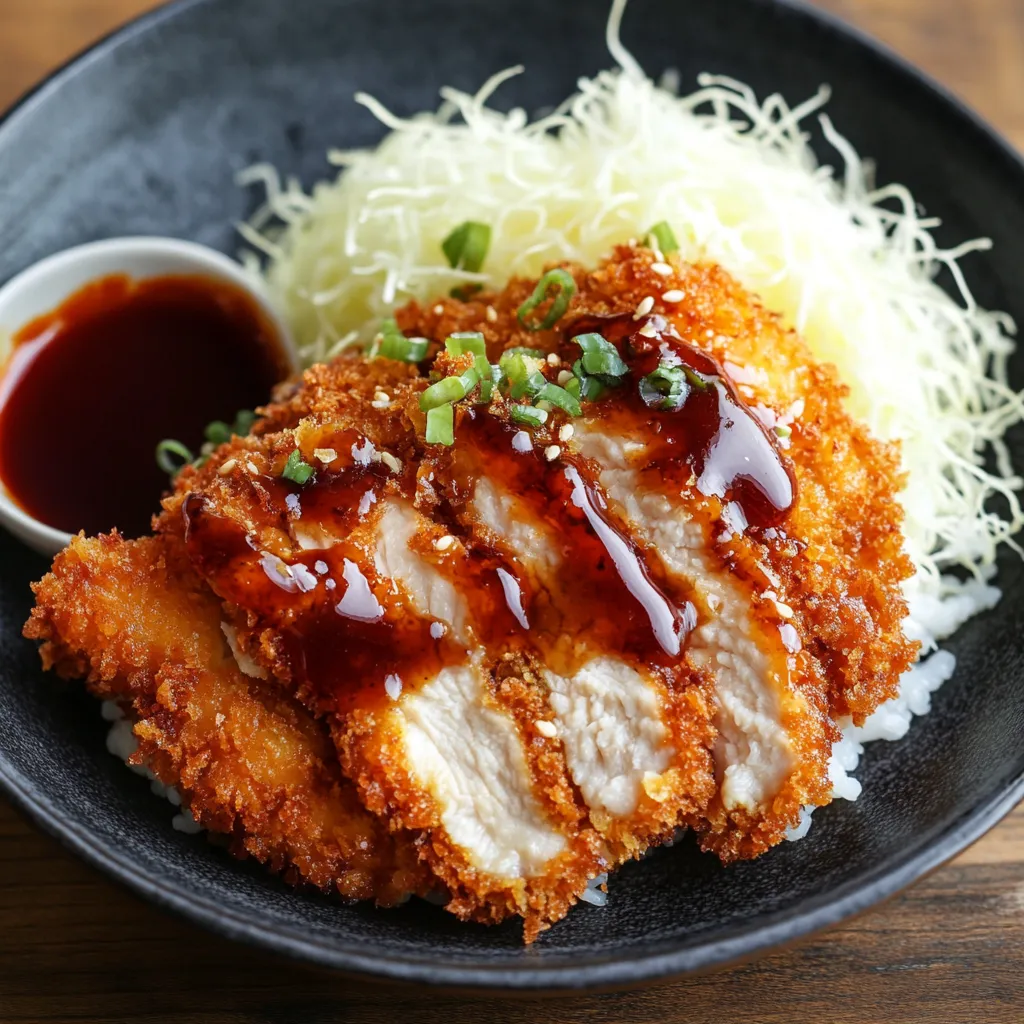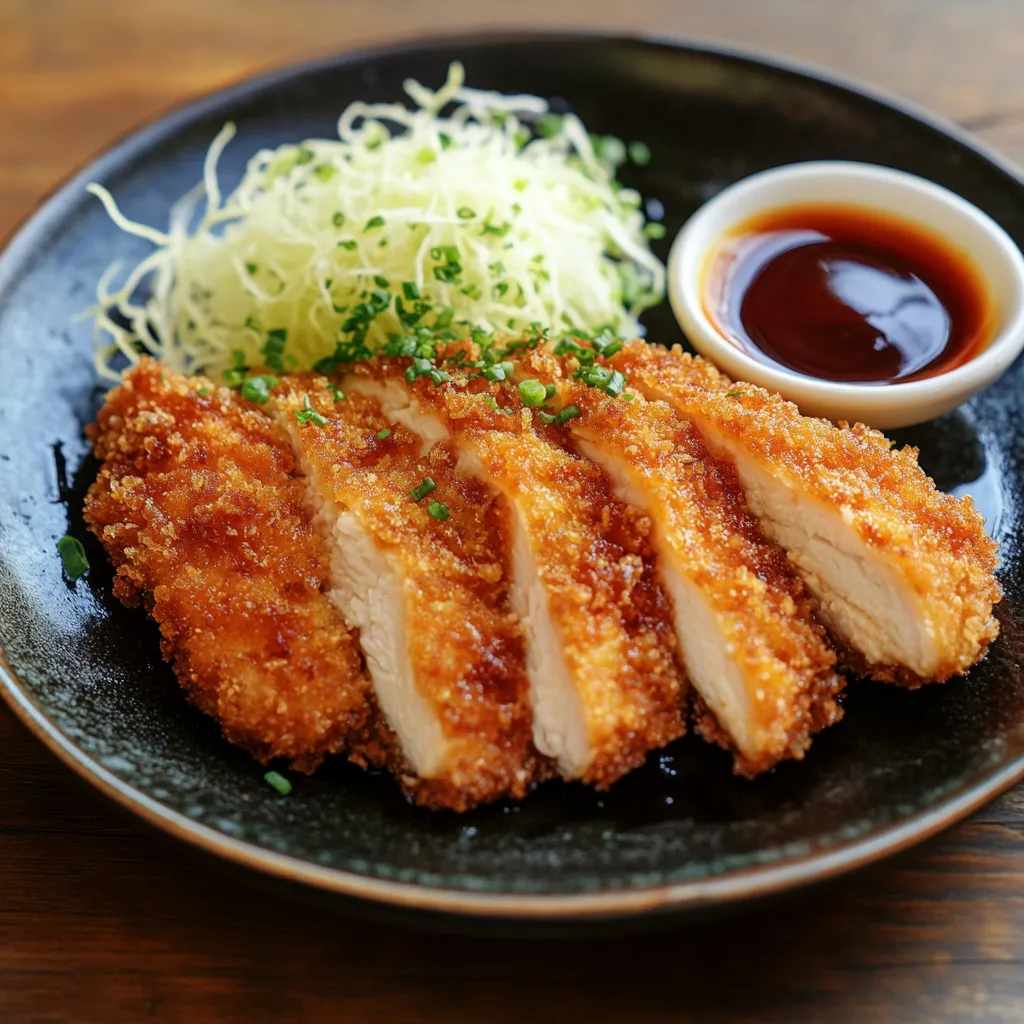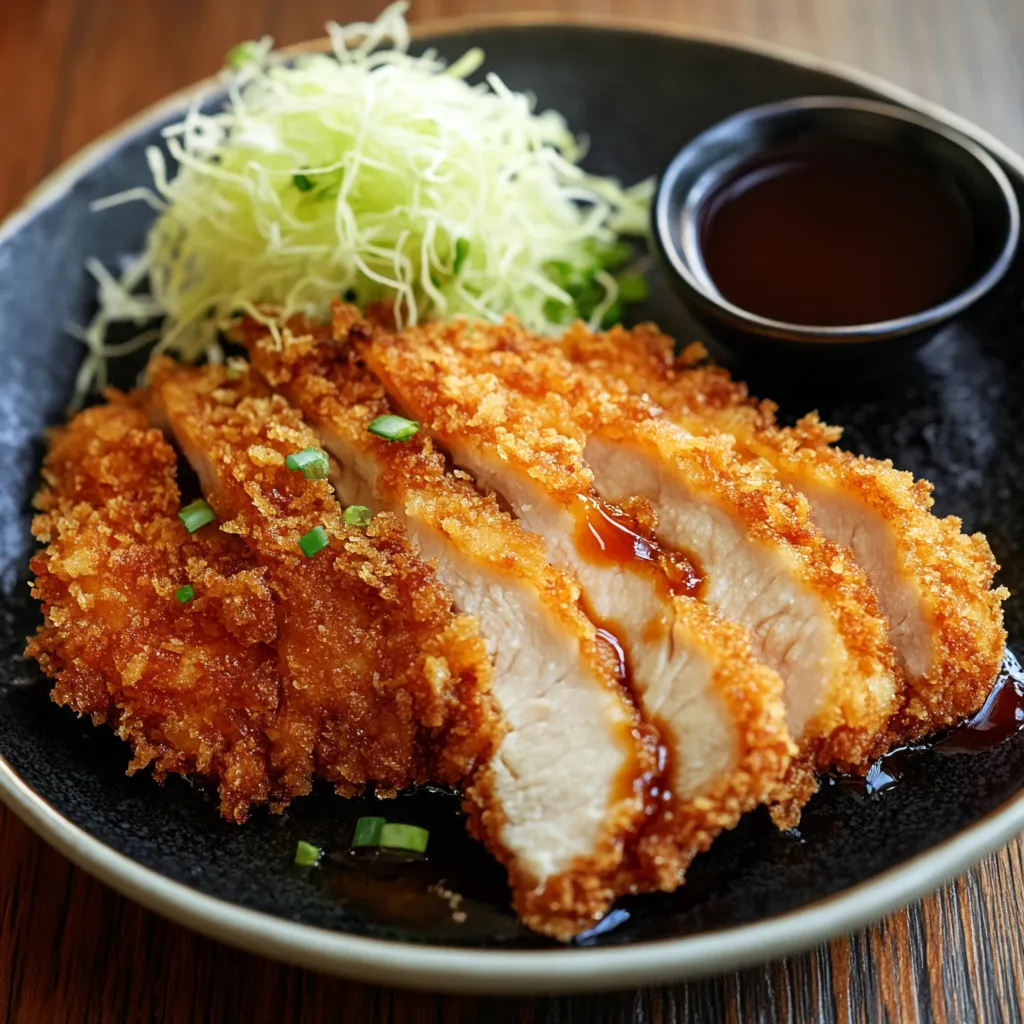 Pin it
Pin it
Crispy golden chicken with a tender, juicy interior is what makes chicken katsu an unforgettable meal. This Japanese comfort food transforms ordinary chicken breasts into something extraordinary through a simple yet precise coating process. The contrast between the crunchy exterior and the succulent meat inside creates a texture sensation that keeps everyone coming back for seconds. My family requests this dish at least twice a month, and I've perfected my technique over countless preparations.
The first time I made chicken katsu, I was skeptical about achieving that perfect crunch at home. After experimenting with different breadcrumbs and frying techniques, I discovered that authentic panko makes all the difference. Now my version rivals what we've enjoyed at our favorite Japanese restaurants, and costs a fraction of the price.
Essential Ingredients
- Chicken breasts: Select plump, even-sized breasts for uniform cooking. The quality of your chicken makes a significant difference in the final dish.
- Panko breadcrumbs: These Japanese-style breadcrumbs create a delicate, crispy coating that stays light rather than dense.
- All-purpose flour: Forms the foundation layer for an even coating. Sifting ensures smooth application.
- Eggs: Fresh eggs bind the coating layers for a sturdy crust.
- Vegetable oil: Choose a neutral oil with a high smoke point for frying.
- Salt and pepper: Enhances the natural flavor of the chicken.
Cooking Instructions
- Preparation:
- Place each chicken breast between plastic wrap and pound to half-inch thickness for even cooking.
- Seasoning:
- Season both sides with salt and pepper, letting it rest for 10 minutes.
- Coating Station:
- Set up three dishes: flour seasoned with salt and pepper, beaten eggs, and panko breadcrumbs.
- Breading Process:
- Coat chicken in flour, then dip into beaten egg, followed by pressing into panko breadcrumbs.
- Frying:
- Heat oil to 350°F. Fry chicken for 4 minutes per side until golden brown and cooked through.
- Resting:
- Transfer to a wire rack and let rest for 5 minutes before slicing.
 Pin it
Pin it
I discovered the magic of proper oil temperature through many trials and errors. My first attempts resulted in either burnt exteriors with raw centers or greasy, pale coatings. Investing in a cooking thermometer transformed my results overnight.
Perfect Pairings
Serve with Japanese steamed rice, shredded cabbage, or katsu curry for a complete meal.
Tasty Variations
Try pork cutlet for tonkatsu, cheese-stuffed katsu for indulgence, or spicy katsu with cayenne seasoning.
Keeping Leftovers
Store in airtight containers lined with paper towels. Reheat in an oven at 350°F for 10 minutes.
 Pin it
Pin it
My journey with chicken katsu began after a memorable trip to Japan. Attention to detail—from the proper breading technique to precise frying—makes all the difference.
Frequently Asked Questions
- → What can I serve with chicken katsu?
- Chicken katsu pairs wonderfully with steamed white rice, shredded cabbage salad, miso soup, or Japanese cucumber salad. For a complete meal, you can also serve it as part of a katsu curry with Japanese curry sauce.
- → Can I bake chicken katsu instead of frying it?
- Yes! For a lighter version, you can bake the panko-coated chicken at 400°F (200°C) for about 20 minutes, or until the internal temperature reaches 165°F (74°C). Spray or drizzle with a little oil before baking for better browning.
- → What is mirin and what can I substitute?
- Mirin is a sweet Japanese rice wine used in cooking. If you don't have it, you can substitute with 1 tablespoon of dry white wine or rice vinegar mixed with 1 teaspoon of sugar.
- → Can I make chicken katsu ahead of time?
- While chicken katsu is best served fresh for maximum crispiness, you can prepare the breaded chicken and tonkatsu sauce a day ahead. Refrigerate the breaded chicken (uncooked) on a plate covered with plastic wrap, then fry just before serving.
- → How do I know when the chicken is fully cooked?
- The safest way is to use a meat thermometer - chicken is fully cooked when its internal temperature reaches 165°F (74°C). Without a thermometer, cook until the meat is no longer pink and juices run clear when cut into with a knife.
- → Can I use chicken thighs instead of breasts?
- Absolutely! Boneless, skinless chicken thighs make a delicious and often more tender katsu. Pound them to an even thickness before breading and adjust the cooking time slightly as thighs may take a bit longer to cook through.
